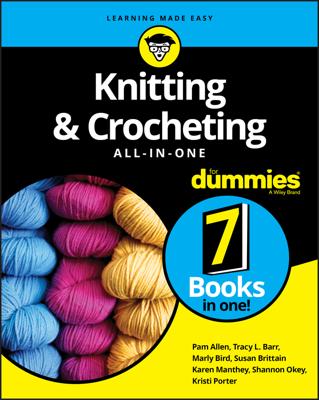Knitting and crochet yarns come in different weights, or thicknesses. The thickness of your yarn (among other factors) has a huge impact on the look of your knitted or crocheted fabric — and certainly the amount of time it takes to complete it. Yarn weight determines how many stitches it takes to knit 1 inch.
Although there are no official categories for yarn weights, many knitting books and yarn manufacturers use common terms to indicate a yarn’s thickness and the size of the needle with which you work on the yarn.







| Yarn Weight | Number ID and Symbol | US Needle Size | Knitting Stitches Per Inch, in Stockinette Stitch | Common Uses |
|---|---|---|---|---|
| Lace | 000–1 | 8–10 | Lace knitting | |
| Super fine, fingering, or baby-weight | 1–3 | 7–8 | Light layettes, socks | |
| Fine or sport-weight | 3–6 | 5–6 | Light sweaters, baby things, accessories | |
| Light worsted or DK (double-knitting) | 5–7 | 5–5 1/2 | Sweaters and other garments, lightweight scarves | |
| Medium- or worsted-weight, afghan, Aran | 7–9 | 4–5 | Sweaters, blankets, outdoor wear (hats, scarves, mittens, and so on) | |
| Bulky or chunky | 10–11 | 3–3 1/2 | Rugs, jackets, blankets | |
| Super bulky | 13–15 | 2–2 1/2 | Heavy blankets and rugs, sweaters |
The thickness of a given yarn is determined by the individual thickness of the plies, not by the number of plies. If the plies are thin, a 4-ply yarn can be finer than a heavy, single-ply yarn.

